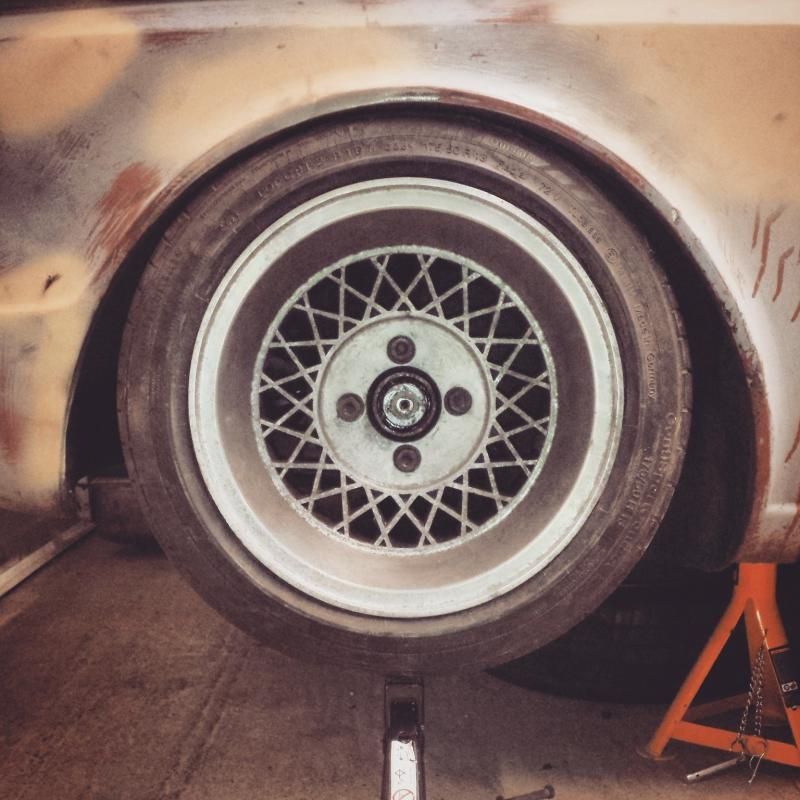|
|
|
Aug 10, 2011 15:44:05 GMT
|
|
Hi all,
So, I'm familiar with the idea of controlling supercharger boost with a wastegate.
I.e. you put on a tiny pulley, spin the supercharger really fast (e.g. it's set up to make 20psi boost) but then you use a supercharger to bleed off the excess boost over 12psi....
But...
Why? I thought that because a supercharger is belt driven, you don't have to worry about this as it chucks out the same amount of air every rev-
Because it's belt driven and chucks out the same amount of air per rev it will make constant boost?
OOOOOORRRRRR... is it because of the effeciency of the charger? Something along the lines of it's not very efficient at low RPM, which is why you under gear it and bleed of the excess?
But surely the flip side is that by spinning it faster you're increasing temperatures and increasing losses?
Cheersssss
|
| |
|
|
|
|
|
|
|
Aug 10, 2011 15:54:07 GMT
|
|
depends where you put the throttle body and whether you use a restrictor ring or not
|
| |
|
|
|
|
|
Aug 10, 2011 18:06:36 GMT
|
|
Errrgh... I've just realised.... is it more of a method of being able to change what boost your running at without having to change pulleys?
|
| |
|
|
|
|
|
Aug 10, 2011 18:30:22 GMT
|
|
Bingo!! Also bear in mind what happens when you've an inlet at 20 psi and you close the throttle butterfly.............
|
| |
1994 Rover Metro
1994 Peugeot 405 Estate
1991 Rover Metro Gti 16v
2001 Fiat Seicento Sporting
1999 Fiat Punto 1.2
1994 Peugeot 106 Xnd (x3)
1991 Westfield 7
2004 Landrover 110 SW
2003 Seat Ibiza 1.9Tdi Sport
1959 Ford 107e Prefect
1992 Suzuki Vitara
2008 Skoda Fabia
|
|
|
|
|
Aug 10, 2011 18:30:32 GMT
|
plus, as you pointed out - boost lower down  But indeed, not particularly efficient |
| |

You're like a crazy backyard genius! |
|
|
|
|
Aug 10, 2011 18:50:18 GMT
|
plus, as you pointed out - boost lower down  But this is the bit I'm not getting... a supercharger is belt driven... so why doesn't it put out the same amount of air and hence boost per RPM? Surely boost should be constant?? And tommietee.... you use a BOV of course well durrrrrrrrrrr  ;D  lol |
| |
|
|
matty2300
South East
Red ones go faster!
Posts: 157
|
|
Aug 10, 2011 18:57:04 GMT
|
|
why would you want to run a supercharger way past the required amount of boost?
wouldnt it just put unneccasary heat into the charge?
if you are using a roots type supercharger thats properly sized for the application then it will supply a constant amount of boost right across the RPM range of the engine.. the boost will naturally go up a bit at high RPM as the volumetric efficiency of the engine drops a bit
|
| |
2002 Saab 93 - Daily
1972 Vauxhall Firenza Sport SL - in storage
1978 Vauxhall Magnum - PROJECT
1993 Vauxhall Cavalier 2.0 GLS - DEAD
1994 Vauxhall Astra 1.4 LS - DEAD
1999 Saab 93 2.0 SE - DEAD
1999 Mercedes W202/C200 - DEAD
|
|
|
|
|
Aug 10, 2011 18:57:25 GMT
|
|
my knowledge of o.e systems is quite limited, but I know a little of how the Lynx engineering/Rich Walker Rotrex supercharger kits for the pug/citroen XU10 16v engines work.
basically a stock throttle body with a restrictor ring of varying sizes bolted on, then the supercharger itself, then the intercooler, then the inlet.
they do a low boost setup which runs 0.6 bar through the stock 10.8 compression lump for 250-260 bhp, or the high boost setup which would have forged rods and pistons - lower compression, larger restrictor ring and 1.3 bar, for 400 bhp.
the pulleys are the same on the charger and the crank on both, rev limit slightly higher on high boost.
|
| |
|
|
|
|
|
Aug 10, 2011 19:09:37 GMT
|
|
superchargers are also geared internally don't forget, so it's more of a ratio, than a set 1:1 displacement
for example (random numbers here):
engine at idle requires 20cfm
supercharger at idle displaces 21cfm
engine at redline requires 200cfm
supercharger displaces 400cfm
The only way to get a constant boost level, regardless of rpm, as you describe, is to use a VERY large supercharger, which can be run at true 1:1 speeds. The supercharger will most likely be larger than the engine itself mind you....
|
| |

You're like a crazy backyard genius! |
|
matty2300
South East
Red ones go faster!
Posts: 157
|
|
Aug 10, 2011 19:35:34 GMT
|
roots superchargers are rated by displacement per revolution.. eaton M45 for example moves 450cc per revolution take a look at this simulator on the eaton site, its pretty easy to pick a supercharger and pulley combo that will give a fairly constant boost across the rpm range for a given engine autoapps.eaton.com/simulator/landing.aspxtry the default 2.0 engine setup with an M45 @ 80% intercooler efficiency and a 1:1.93 pulley ratio |
| |
Last Edit: Aug 10, 2011 20:08:34 GMT by matty2300
2002 Saab 93 - Daily
1972 Vauxhall Firenza Sport SL - in storage
1978 Vauxhall Magnum - PROJECT
1993 Vauxhall Cavalier 2.0 GLS - DEAD
1994 Vauxhall Astra 1.4 LS - DEAD
1999 Saab 93 2.0 SE - DEAD
1999 Mercedes W202/C200 - DEAD
|
|
|
|
|
|
|
|
so, say the engine idles at a nice round 1000rpm, the supercharger would be doing 1930rpm. Nearly double the speed.
Now, if we raise the rpm to 6000rpm, that means the supercharger is now doing an incredible 11,580rpm!
Also, the number after the supercharger, refers to cubic inches per revolution. So the M45 spits out 45Cu per revolution, the M90, 90Cu, etc, etc
|
| |

You're like a crazy backyard genius! |
|
matty2300
South East
Red ones go faster!
Posts: 157
|
|
Aug 11, 2011 16:57:25 GMT
|
ah yea.. 45cu oops  aparently eatons m are good for 14000rpm but tend to blow hot and die pretty fast after that ;D www.capa.com.au/eaton.htm has a fair amount of info on them |
| |
Last Edit: Aug 11, 2011 17:04:18 GMT by matty2300
2002 Saab 93 - Daily
1972 Vauxhall Firenza Sport SL - in storage
1978 Vauxhall Magnum - PROJECT
1993 Vauxhall Cavalier 2.0 GLS - DEAD
1994 Vauxhall Astra 1.4 LS - DEAD
1999 Saab 93 2.0 SE - DEAD
1999 Mercedes W202/C200 - DEAD
|
|










 ;D
;D  lol
lol